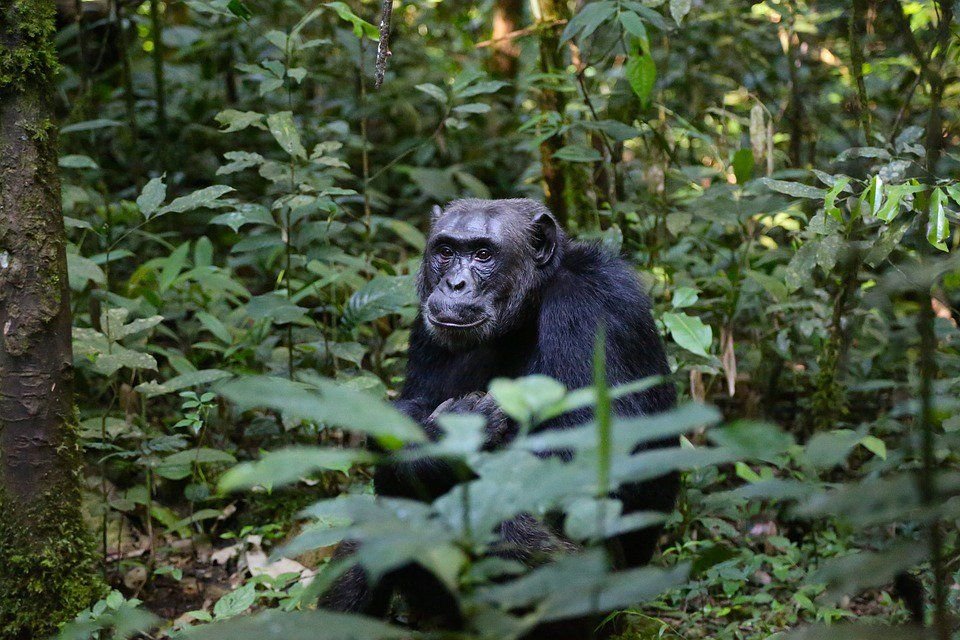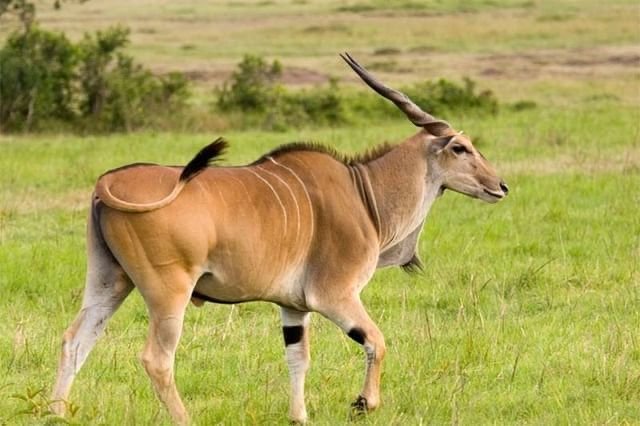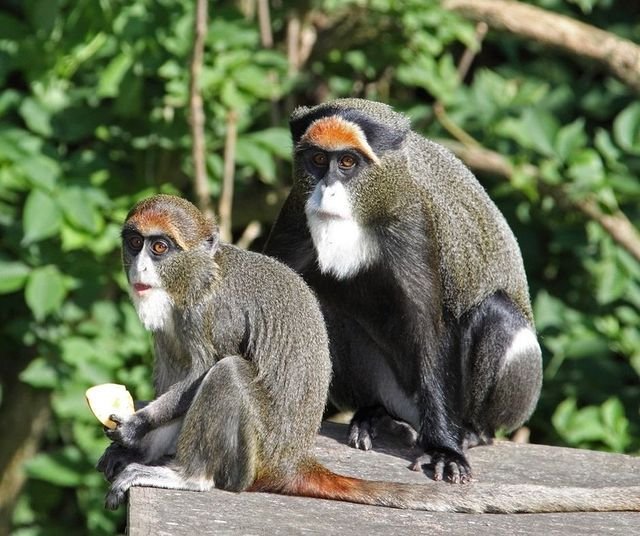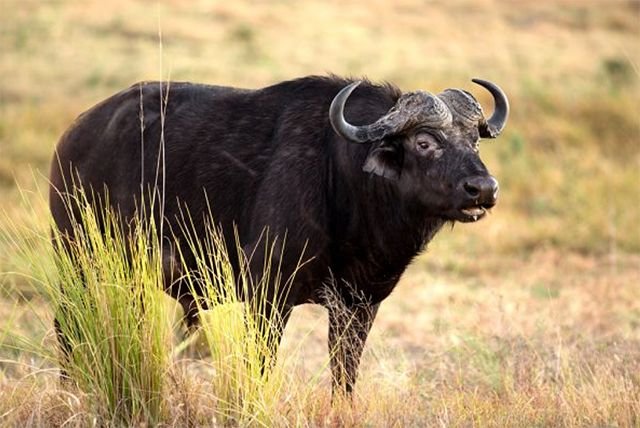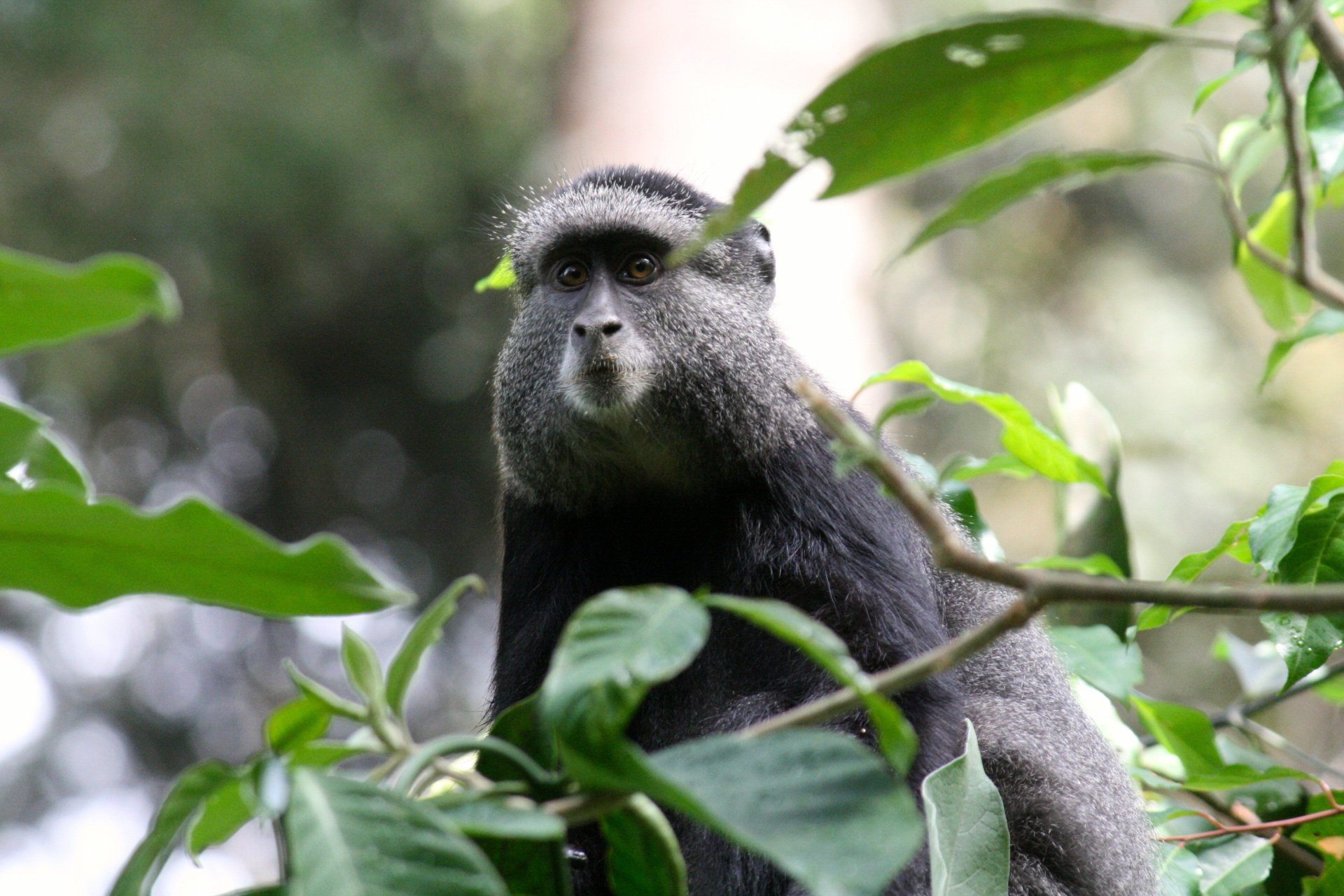Lesser kudu
Male lesser kudu, one of the plains' most visually arresting antelope species (seen in Uganda near Pian Upe Game Reserve).

East Africa is home to the lesser kudu (Tragelaphus imberbis), a bushland antelope. It belongs to the family Bovidae and the genus Tragelaphus.
An antelope with spiral horns, the lesser kudu.
Males are noticeably larger than females. Males have a yellowish grey or darker coat after two years of age, whilst both females and young males have a rufous coat. The female lacks the male's well-developed black neck crest, which is a distinguishing trait. One white stripe branches out from one long white stripe that goes along the back and toward the sides.
There is no throat beard, and the chest bears a central black line. Each eye has a white stripe that extends to the centre of the dark face and a black stripe that runs from each eye to the nose. Between the eyes, there is a chevron. The lips are white, the throat has white patches, and the lower jaw has two white spots on either side. The legs are thin and tawny, with black and white patterns, but the underside is all white. The larger, rounder ears of the smaller kudu are its defining feature. It has tracks that resemble those of the bigger kudu. Teats are four for females. In the wild, the typical lifespan is 10 years; in captivity, it is 15 years.
Only the males have horns.
lesser kudu behaviour
The lesser kudu is mostly active at night and in the early morning, when it seeks refuge in thickets. Only its ears and tail can reveal its presence because of how effectively it can blend in with such lush flora. In the shade, people reflect and rest during the middle of the day. The time the animal spends foraging, standing, lying down, and roaming is roughly equal. Since it is a thin tragelaphine, the lesser kudu can easily move through thick undergrowth. The smaller kudu is a timid and watchful creature. The animal freezes in place when startled. When it senses a predator coming, it gives a short, harsh bark like a bushbuck and then jumps up to 2 metres (6.6 feet) in the air with its tail up. In the event of capture by the predator, the victim bleats loudly.
Lesser kudus, in particular, are sociable by nature. The social structure doesn't have a clear leader or a hierarchy, and there isn't any territorial behaviour, so there aren't many big fights.
Male juveniles can form couples when they are one and a half years old and depart from their moms. Males, however, prefer to live alone and avoid one another by the time they are 4-5 years old, even though four or five bulls may live in the same home range.
lesser kudu Reproduction
By the time they are one year and a half old, both males and females have reached sexual maturity. Males don't actually start mating until they are four to five years old. Males and females are most fertile between the ages of 14 and 18, and a woman can successfully breastfeed until she is 13 or 14 years old. Births can happen at any time of the year because there is no set breeding season.
When a rutting male meets a female, the female will urinate when the male tests her urine. When a female is in oestrus, the male follows her closely and tries to brush his cheek against her rump, head, neck, and breast. He moves his lips in a gasping motion. Lastly, the male mounts the female in a way that is similar to how other tragelaphines do it. He puts his head and neck on her back.
A single calf is born during a gestation period of 7-8 months. A woman who is ready to give birth withdraws from her group and stays by herself for a few days.
The mother hides the calf while she feeds and only comes back in the evening to nurse the baby.
Lesser kudu Diet
The lesser kudu is a pure browser that consumes herbs and foliage from bushes and trees (shoots and twigs). It also eats flowers, fruits, and small amounts of grass if it can get to them, mostly during the rainy season. Despite seasonal and regional fluctuations, 60–80% of the diet is made up of the leaves of trees and bushes.
Where in Uganda can you see lesser kudu?
Male lesser kudus can be seen in and around Uganda's Pian Upe Game Reserve, and they are arguably the most visually arresting of the antelope species native to the country's plains.
What's Your Reaction?
 Like
0
Like
0
 Dislike
0
Dislike
0
 Love
0
Love
0
 Funny
0
Funny
0
 Angry
0
Angry
0
 Sad
0
Sad
0
 Wow
0
Wow
0





























































